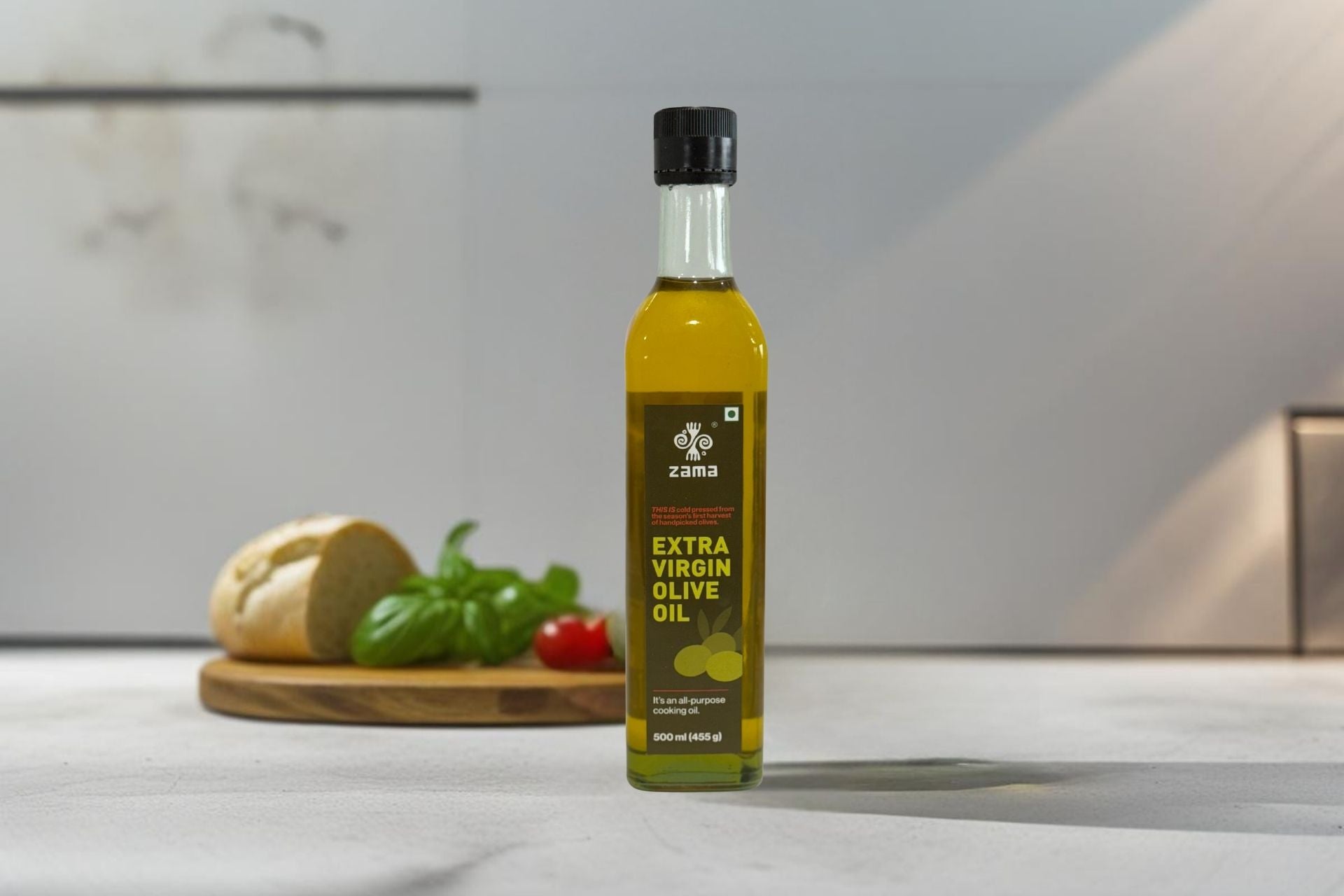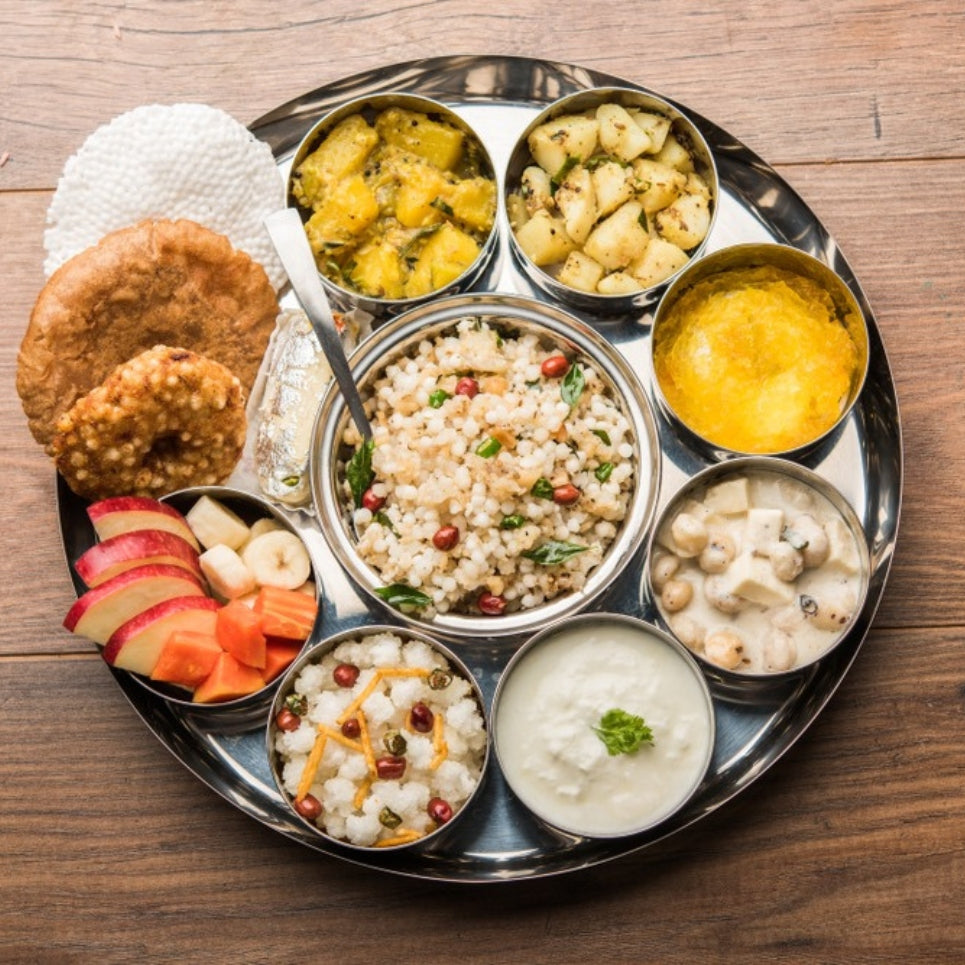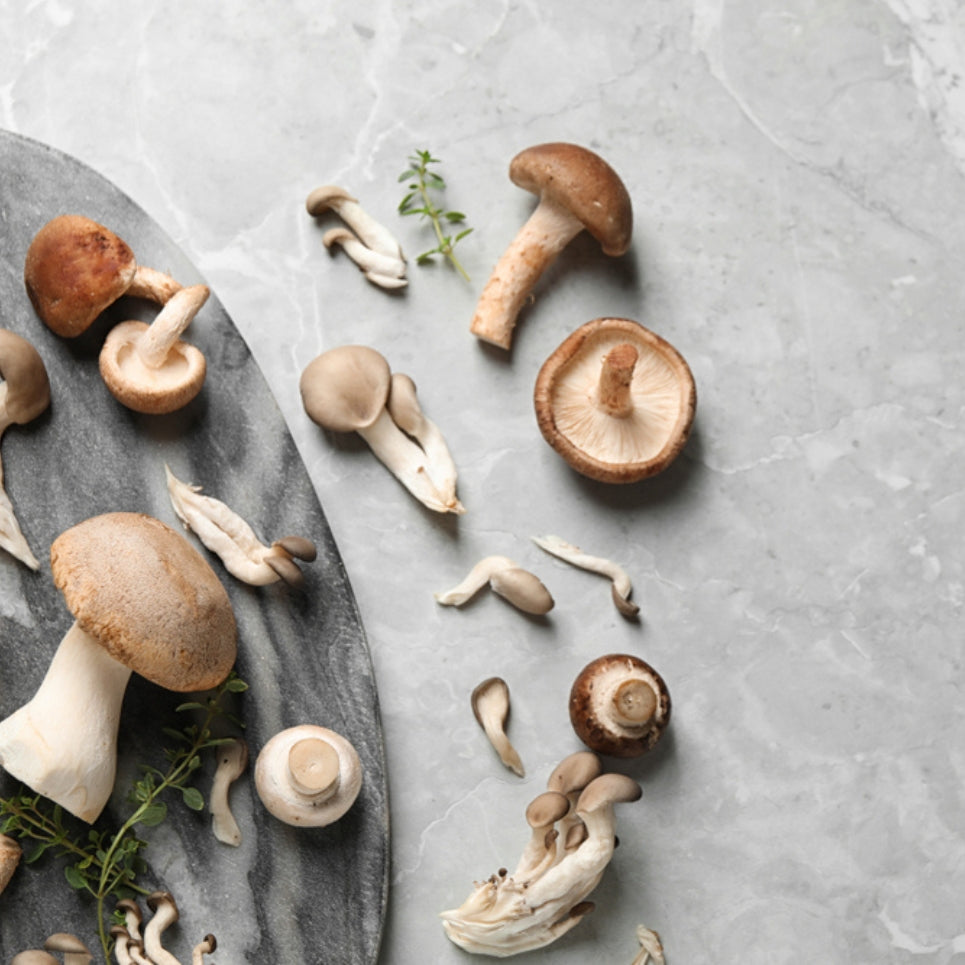Did you know that nearly one-third of all food produced globally goes to waste? Zero-waste cooking is a fantastic way to combat this staggering statistic while enhancing your kitchen skills and being kinder to the planet. It’s not just a trend; it's a mindful approach to using every part of your ingredients and minimizing food waste. Let's dive into how zero-waste cooking can make a difference and how you can apply it in your kitchen, especially with Zama Organics' high-quality products.
Check out our reel on Instagram to learn about cooking with vegetable leftovers!
A. Yes, as long as the scraps are clean and come from fresh, organic sources, food scraps can be safely used in cooking.
Q. How can I creatively use leftover grains like rice or quinoa?
A. Leftover grains can be used in stir-fries, salads, or soups, or made into crispy snacks by frying them lightly in oil.
Q. What should I do with excess herbs before they spoil?
A. Chop and freeze herbs in olive oil or butter, or use them to make sauces like pesto or chimichurri. You can also dry them for later use.
Q. How do I store leftovers for future meals?
A. Store leftovers in airtight containers in the fridge for up to a few days or freeze them for longer periods. Label them to keep track of when they were made.
Q. Why should I choose organic ingredients for zero-waste cooking?
A. Organic ingredients are free from harmful chemicals, meaning you can safely use every part of the food without worrying about pesticide residue.
What is Zero-waste Cooking?
Zero-waste cooking is a sustainable approach to food preparation that focuses on using every part of your ingredients, reducing food waste, and maximizing the value of groceries. Instead of discarding scraps like vegetable peels, stems, or overripe produce, zero-waste cooking encourages repurposing these parts into new dishes, or compost. It’s an eco-friendly way to minimize waste, save money, and contribute to a healthier planet.The Problem of Food Waste
Did you know that one-third of all food produced globally goes to waste? That’s 1.3 billion tons of food lost each year. This waste has a huge impact on the environment, with food rotting in landfills. Moreover, wasting food also means wasting the resources used to produce it—water, labor, energy, and land. By embracing zero-waste cooking, we can reduce food waste and lessen our environmental footprint.The Environmental Impact of Food Waste
Food waste contributes significantly to environmental damage. When food rots in landfills, it produces methane—a potent greenhouse gas that contributes to climate change. According to studies, food waste accounts for 8-10% of global greenhouse gas emissions. Imagine if we could reduce that by simply using up all our ingredients!Benefits of Zero-Waste Cooking
Economic Benefits: Save Money
When you learn to use every part of your groceries, you’ll be amazed at how much money you save. For instance, turning vegetable scraps into broth or using overripe fruits in smoothies prevents you from having to buy additional ingredients.Environmental Benefits: Reduce Waste and Carbon Footprint
Every meal you make without throwing away food helps reduce methane emissions from landfills and conserves resources. Zero-waste cooking is an easy way to fight climate change from your kitchen.Health Benefits: Fresh, Wholesome Ingredients
Zero-waste cooking encourages you to use fresh, whole ingredients instead of relying on processed foods. This can lead to healthier meals, as you incorporate every part of organic fruits, vegetables, and grains into your diet.How to Make the Most of Your Groceries
1. Planning Meals with Every Ingredient in Mind
The key to zero-waste cooking is planning. Before you even hit the grocery store, think about how you can use every part of the ingredients you plan to buy. For example, can the stems, leaves, or skins of your produce be used in another meal?2. Smart Grocery Shopping
Buy only what you need to avoid over-purchasing, which can lead to food waste. With Zama Organics, you can ensure you’re buying high-quality organic products that will stay fresh longer due to their nutrient-rich farming practices.3. Store Food Properly
Extend the shelf life of groceries by storing fruits and vegetables in the right conditions and using airtight containers for leftovers. Label items with dates to track.4. Keep Track of Your Inventory
Regularly check your pantry and fridge before shopping. Keeping an inventory helps avoid unnecessary purchases and ensures you use what you already have.Creative Ways to Use Every Part of Your Ingredients
1. Reusing Vegetable Peels and Skins
Vegetable peels and skins are often overlooked and thrown away, but they can add a delightful twist to your meals. Carrot, potato, and cucumber peels are all rich in nutrients and flavor. One easy way to utilize these scraps is by adding them to soups and stocks. Simply chop the peels into smaller pieces and toss them into your pot along with your other vegetables. As they cook, they release their flavors, enriching the broth.
2. Stems and Leaves Aren't Trash!
When preparing vegetables, it’s common to discard stems and leaves, but this practice leads to unnecessary waste. For instance, broccoli stems are just as nutritious as the florets and can be sliced thinly and included in stir-fries or salads for added crunch. They can also be peeled to remove the tough outer layer and then grated into slaws or soups for a delicious, nutrient-rich addition.
3. Seeds and Pits for Extra Flavor
Seeds and pits are often discarded without a second thought, but they can be a great source of flavor and nutrition. For example, pumpkin and squash seeds are delicious when roasted. Simply rinse the seeds to remove any pumpkin pulp, toss them with a bit of oil and your favorite seasonings, and roast them in the oven until golden brown. They make a crunchy snack or a tasty topping for salads and soups.
Cooking with Leftovers: Recipes to Try
1. Vegetable Stock from Scraps
Creating vegetable stock from kitchen scraps is a fantastic way to reduce waste while adding depth of flavor to your soups, stews, and sauces. By collecting onion skins, carrot peels, celery leaves, and other vegetable scraps in a freezer bag, you can make a flavorful broth without any extra cost.
2. Crispy Roasted Potato Peels
Potato peels are often thrown away, but they can be transformed into a crunchy, healthy snack that’s easy to make. By roasting them, you get a deliciously crispy texture that can satisfy your snack cravings.
3. Carrot Tops Pesto
Instead of tossing out the green tops of carrots, use them to make a flavorful pesto. This recipe not only helps reduce waste but also introduces a unique twist to a classic condiment.
Check out our reel on Instagram to learn about cooking with vegetable leftovers!
Fruit Scraps: Delicious Ideas
1. Citrus Peels in Syrups and Zests
Citrus peels, often discarded after juicing or slicing, are packed with essential oils and flavor that can elevate your culinary creations. By zesting citrus peels, you can infuse brightness into baked goods, dressings, and marinades. Additionally, making a syrup with the peels enhances drinks, desserts, and even savory dishes.
2. Apple Core Vinegar
Apple cores and peels can be repurposed into homemade apple cider vinegar, which not only saves waste but also provides a tangy, flavorful ingredient for salads and marinades. This fermentation process is simple and requires minimal effort, resulting in a homemade product you can be proud of.
Regrowing Vegetables from Scraps
Regrowing vegetables from scraps is a simple and sustainable way to reduce waste and enjoy fresh produce at home. For example, you can take the root ends of scallions, the base of lettuce, or the cut end of celery and place them in a jar of water. Keep the jars in a sunny spot and change the water regularly to encourage new growth. Within a week or so, you'll see new shoots sprouting, providing a continuous supply of fresh ingredients for your meals!Storing Food Properly to Avoid Waste
Proper food storage is essential for minimizing waste and ensuring ingredients remain fresh. Different foods have specific storage requirements; for example, fruits and vegetables should be kept in separate bins to avoid ethylene gas ripening. Using airtight containers for dry goods can prevent spoilage and maintain quality. By organizing your fridge and pantry effectively, you extend the shelf life of your groceries and make it easier to use them before they expire.Meal Planning for Zero-Waste Cooking
Smart meal planning is key to zero-waste cooking. By organizing your meals around ingredients that are nearing their expiration date, you can reduce food waste significantly. Creating a flexible menu allows you to incorporate leftovers creatively, transforming them into new dishes. This thoughtful approach not only saves money but also fosters a more sustainable and efficient kitchen environment.Composting: A Last Resort for Food Waste
When you’ve used up every part of your ingredients, composting is a great way to dispose of food scraps. By setting up a small compost bin at home, you can turn vegetable scraps, fruit peels, and other organic matter into nutrient-rich soil. This process not only reduces the amount of waste sent to landfills but also enriches your garden or potted plants with valuable nutrients. Ultimately, composting completes the cycle of sustainability, transforming waste into a resource for future growth.
The Role of Zama Organics in Promoting Zero-Waste Cooking
Zama Organics is dedicated to promoting sustainability through their organic farming practices and eco-friendly packaging. Their mission is to provide high-quality, organic ingredients that support a zero-waste lifestyle.Commitment to Organic Farming
Zama Organics employs sustainable farming methods that enhance soil health, promote biodiversity, and reduce reliance on synthetic fertilizers and pesticides. These practices not only produce healthier food but also contribute to a more sustainable ecosystem.Eco-Friendly Packaging Solutions
Recognizing that packaging can contribute significantly to waste, Zama Organics uses eco-friendly materials that are biodegradable or recyclable. This commitment extends beyond just the product; it encourages consumers to think critically about their purchasing choices. By opting for packaging that minimizes waste, Zama Organics empowers customers to participate in the zero-waste movement.Zero-Waste Cooking as a Lifestyle Change
Zero-waste cooking isn’t just a trend—it’s a lifestyle change that can have a profound impact on the environment, your health, and your budget. By making small adjustments, like buying organic ingredients from Zama Organics and getting creative with your meals, you’ll be contributing to a more sustainable world.FAQs
Q. Is it safe to cook with food scraps?A. Yes, as long as the scraps are clean and come from fresh, organic sources, food scraps can be safely used in cooking.
Q. How can I creatively use leftover grains like rice or quinoa?
A. Leftover grains can be used in stir-fries, salads, or soups, or made into crispy snacks by frying them lightly in oil.
Q. What should I do with excess herbs before they spoil?
A. Chop and freeze herbs in olive oil or butter, or use them to make sauces like pesto or chimichurri. You can also dry them for later use.
Q. How do I store leftovers for future meals?
A. Store leftovers in airtight containers in the fridge for up to a few days or freeze them for longer periods. Label them to keep track of when they were made.
Q. Why should I choose organic ingredients for zero-waste cooking?
A. Organic ingredients are free from harmful chemicals, meaning you can safely use every part of the food without worrying about pesticide residue.




